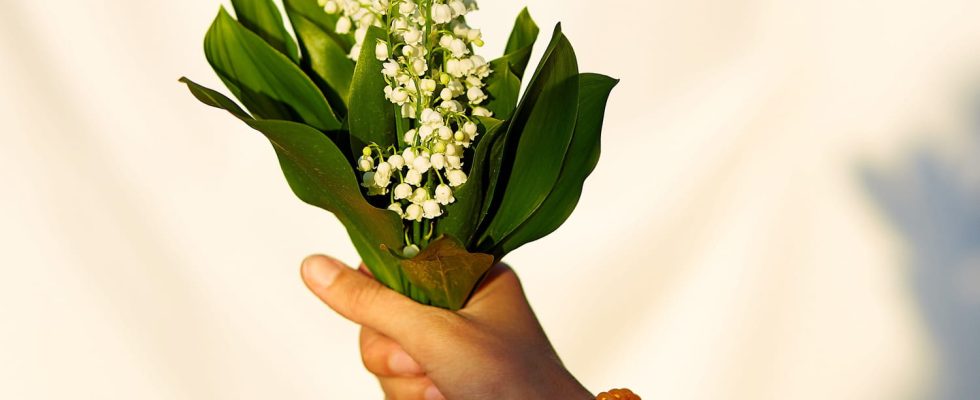Symbol of May 1st and spring, lily of the valley can be very toxic for the digestive tract and the heart.
May, the 1stit is customary to pick, buy or offer a sprig of lily of the valley found in the forest or at florists. These little bells symbolize the return of spring and sunny days, and are said to bring good luck. But be careful, lily of the valley (from its scientific name Convallaria majalis) is a plant of the liliaceae family, which contains substances irritating to the digestive tract and toxic to the heart – saponosides and cardiotoxic glycosides – which can cause fatal poisoning in humans (and in animals). Poison Control Centers receive between 40 and 60 calls per year in relation to thrush poisoning, particularly around May 1st.
Poisoning occurs by ingestion of parts of the plant: stems, leaves, berries (red berries which adorn the leaf in autumn)… All parts of the plant are toxic to humans and animals, and even the water in the vase. Also, wilted and dried out lily of the valley remains toxic. The toxic dose is poorly known. A few milligrams of pure toxin are enough to cause a reaction, especially in children. Poison Control Centers estimate that a large quantity of lily of the valley corresponds to the equivalent of 3 to 5 berries in adults or 1 or 2 in children (or 2 leaves or 2 stems) and this requires emergency treatment. to the hospital with cardiac monitoring. Particularly at risk are young children, adults with a smell disorder, and older people with cognitive impairment.
The 4 symptoms of poisoning
If accidentally ingested, thrush can cause:
- Digestive and abdominal pain
- Mouth irritation and hypersalivation
- Nausea and vomiting
- Significant diarrhea, sometimes hemorrhagic
If ingested in large quantities (which is rare in humans): cardiovascular effects, hypotension And slow heart rate (bradycardia). “Lily of valley contains substances from the digitalis family. Digitalis is used in cardiology so ingesting lily of the valley can have cardiac effects”, explained Dr Jérôme Langrand, doctor at the Paris Poison Control Center, during a previous interview on toxic plants.
What to do in case of lily of the valley poisoning?
► In case of ingestion ofa small amount of plant : immediately contact the Poison Control Center nearest to you. The contact person, online, will assess the toxic exposure and tell you what to do. He may ask you the name of the plant or its detailed description, the part of the plant that was ingested (berry, flower, leaf, stem, etc.), the quantity swallowed, the time between ingestion and the call. or the symptoms observed.
► If ingesteda large quantity of plant (5 berries and more, 2 leaves or 2 stems and more): you have to go immediately to the nearest emergency roomOr call the fire department (by dialing 18 or 112) or Samu (15) for support at hospital with cardiac monitoring. Antidigital antibodies (Digidot®) or atropines against bradycardia can also be considered.
► In all cases, be sure to keep lily of the valley out of reach of children and animals. As a preventive measure, it is advisable to never leave the vase of dirty water on a tableespecially if the vase is a glass.
There is a real risk of confusion between the edible leaves of wild garlic (Allium ursinum) and those toxic of thrush, warns the Belgian Antipoison Center on its website. To differentiate them:Wild garlic has a characteristic garlic odor, white star-shaped flowers and ends with a white, elongated bulb while lily of the valley has two to three rigid leaves on the same stem. The stem of lily of the valley flowers does not exceed the leaves in height.
